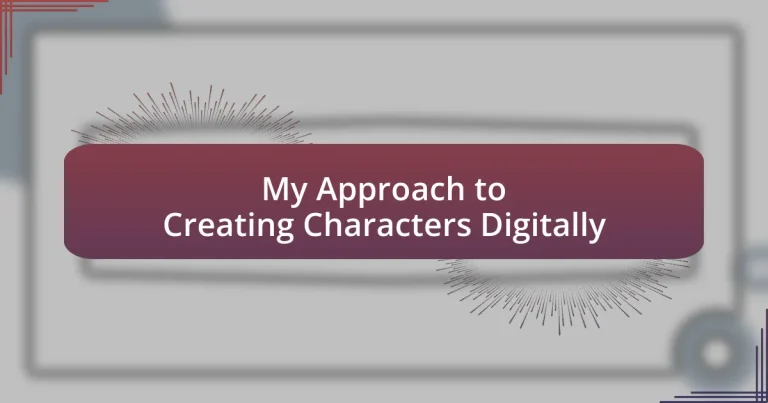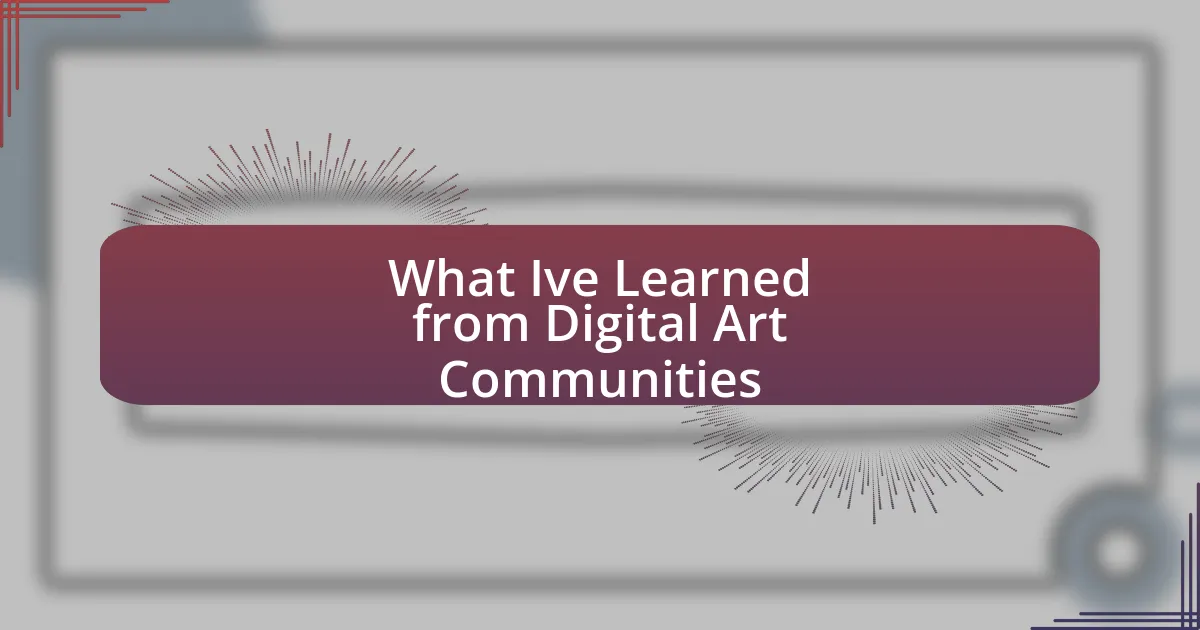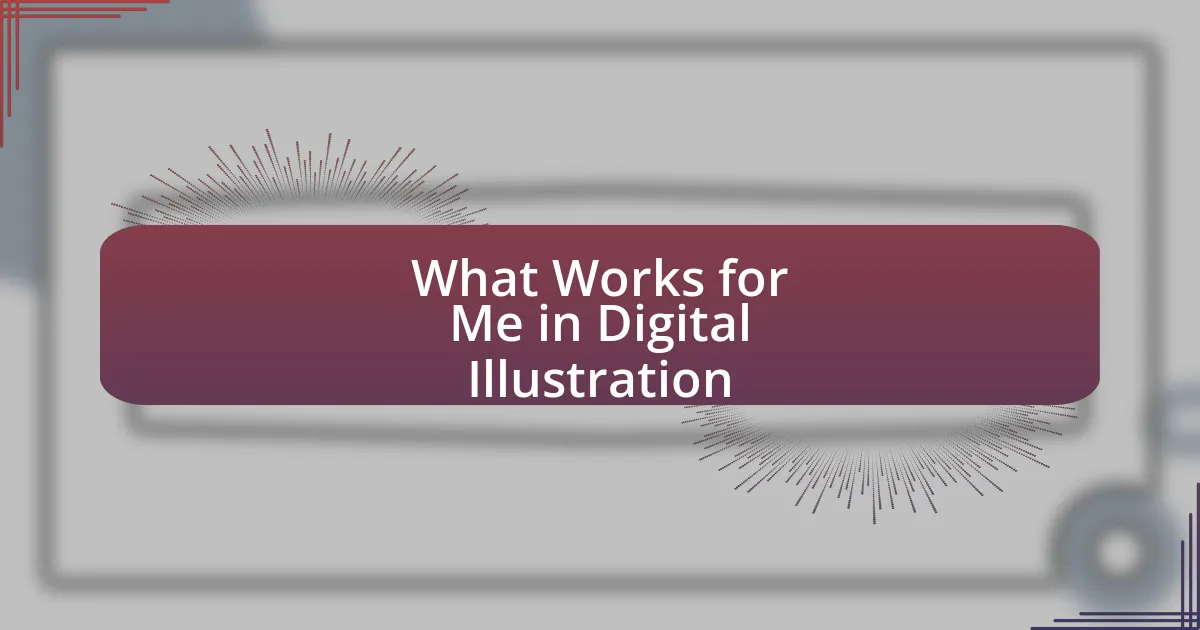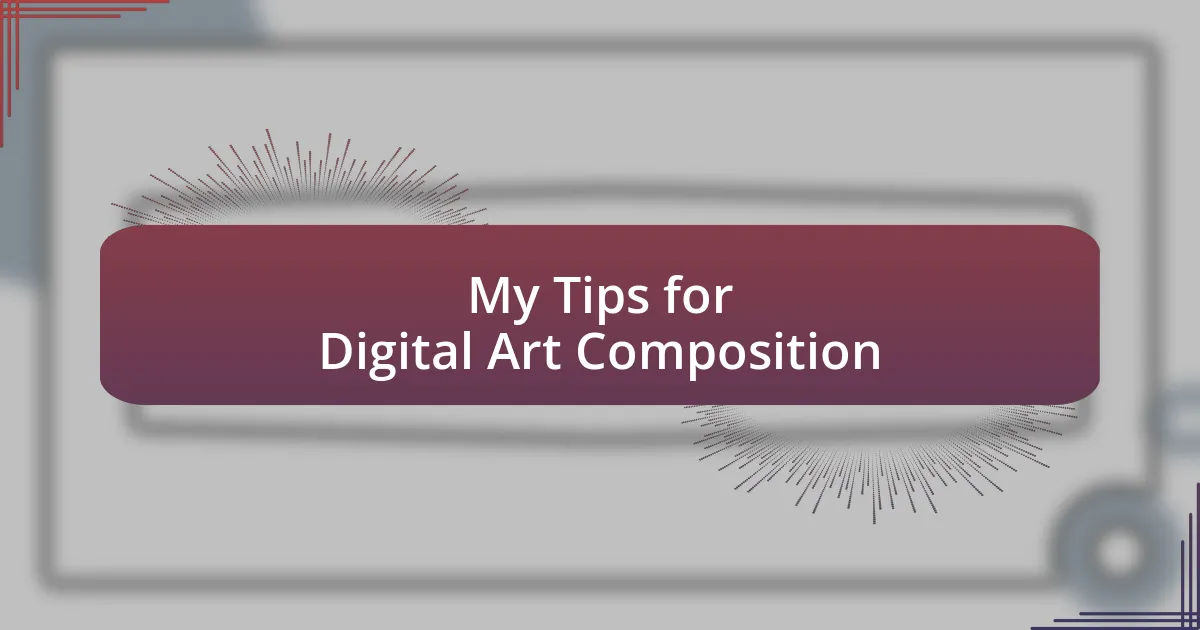Key takeaways:
- Character creation begins with inspiration from real-life experiences and thorough exploration of backstory, personality, and motivation.
- Choosing the right digital tools is essential for enhancing creativity, with software selection tailored to the project’s needs.
- Developing unique character profiles involves defining core traits, backstories, and visual representations, which create relatable and emotionally resonant characters.
- Testing characters in various situations reveals hidden vulnerabilities and growth, enriching their development and making their journeys more authentic.
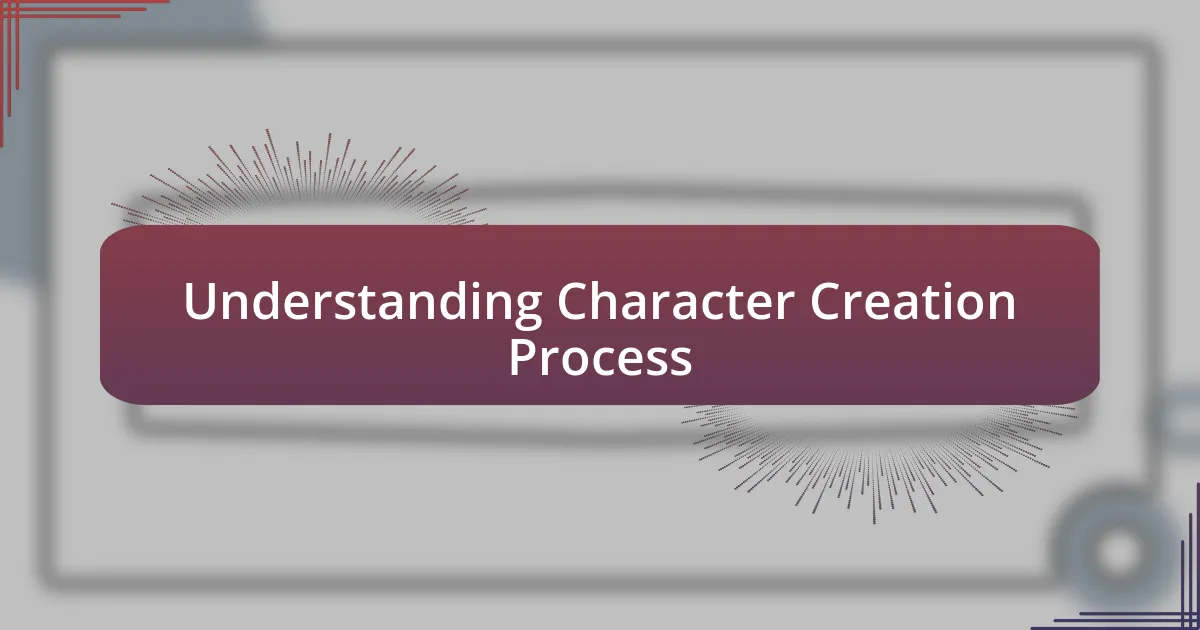
Understanding Character Creation Process
Creating a character digitally often begins with a foundation of inspiration. I regularly find that my best ideas stem from a mix of real-life experiences and the people I encounter. Ever had that moment when a stranger’s story sparks a character in your mind? That’s the magic of observation.
Next, I dive deep into crafting their backstory. It’s fascinating how a character’s history shapes who they are. For instance, I once created a character based on a friend who overcame significant adversity. Thinking about their struggles equipped me with depth, transforming a simple sketch into a multi-dimensional persona.
Finally, I focus on visual design, blending traits that embody their essence. I remember working on a character who was a digital artist; every detail, from their quirky outfit to the tools they wield, spoke volumes about their personality. How do you want your characters to resonate with your audience? The right visual representation can evoke emotions and make them unforgettable.
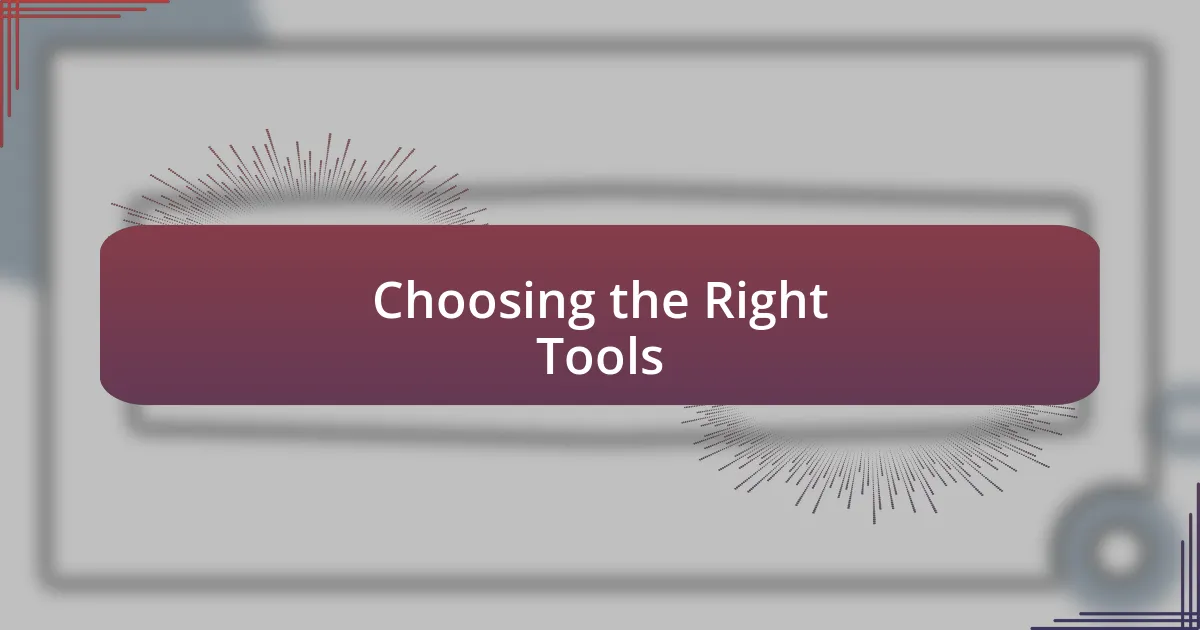
Choosing the Right Tools
Choosing the right tools for digital character creation can make a significant difference in the final outcome. I often find that the software I choose can either stifle my creativity or unleash it. For example, using a program like Procreate allows for a fluid, hands-on approach to sketching that feels organic. In contrast, using more rigid software can sometimes feel limiting, which is why I make sure to try various options before settling on my favorites.
When I explore different tools, I also pay attention to their learning curves. Some programs, like Blender, offer extensive features for 3D modeling but can be quite intimidating for beginners. I remember my first attempts at Blender; it was overwhelming! Yet, the investment of time paid off as I discovered its powerful capabilities. Therefore, I suggest trying out free trials or beginner-friendly tutorials to find what resonates with your style.
Ultimately, it’s about personal preference and what feels natural to you. I often cycle through tools based on the project. If I’m creating a whimsical character, I might lean towards a software that emphasizes vibrant colors and textures, while a more serious character might require a different approach. Finding balance in tool selection can enhance the creativity and depth of your characters.
| Tool | Strengths |
|---|---|
| Procreate | User-friendly interface, excellent for illustrations |
| Blender | Advanced 3D modeling features, versatile |
| Adobe Illustrator | Great for vector-based designs, professional quality |
| Clip Studio Paint | Strong manga and comic-oriented tools, customizable brushes |
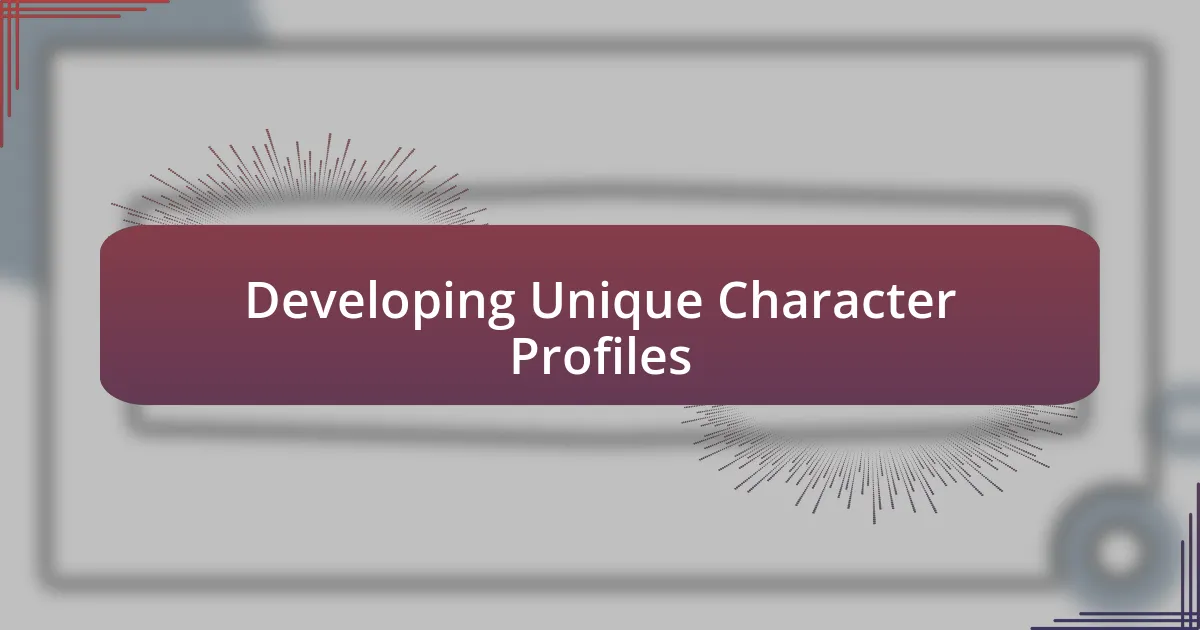
Developing Unique Character Profiles
Creating unique character profiles is a vital step in digital character design. I often start by outlining my characters’ core traits and backgrounds. This foundational process helps me dive deeper into their motivations and quirks. I recall developing a character named Zara, who transformed from a shy artist into a fierce rebel. The journey of crafting her profile was exhilarating; it encouraged me to explore her fears, dreams, and the events that shaped her.
Here are key elements I consider when developing unique character profiles:
- Name: Reflects personality or background.
- Age: Influences behavior and perspective.
- Backstory: Shapes their motivations and goals.
- Appearance: Communicates intrinsic traits and style.
- Personality Traits: Adds depth (e.g., introverted, ambitious).
- Motivations: Drives their actions and decisions.
- Flaws: Makes them relatable and realistic.
These elements help me build characters that feel alive and resonate with others. Understanding these attributes allows me to connect emotionally with my audience, making the creative process even more rewarding.
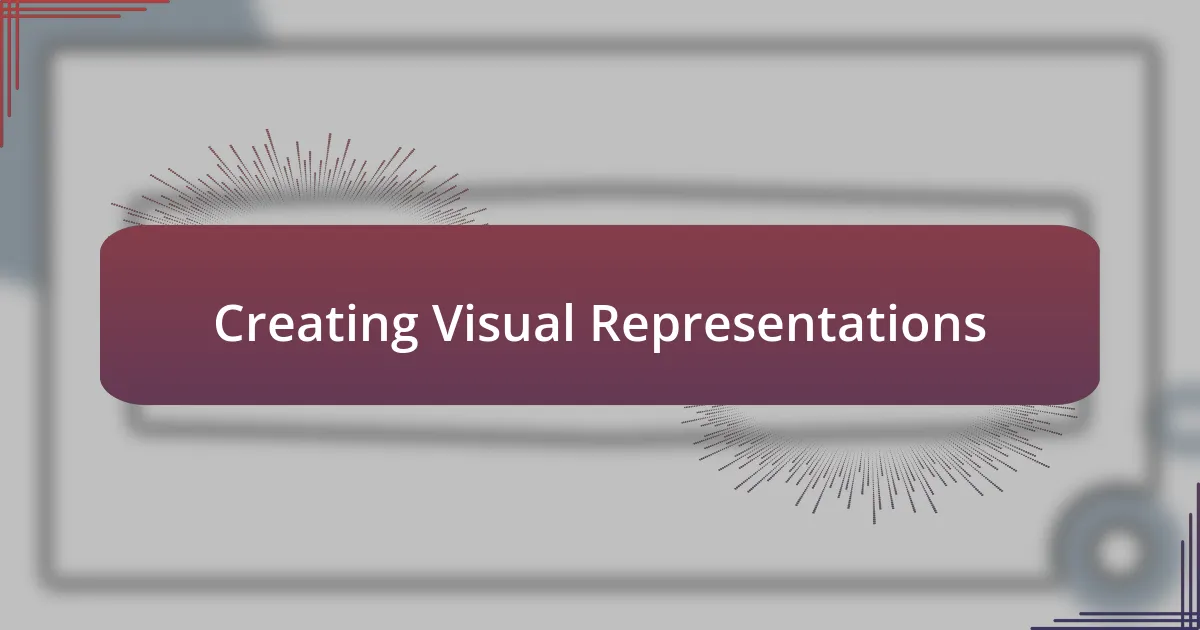
Creating Visual Representations
Creating visual representations of characters is an exciting yet challenging part of the design process. I find that visual details, such as color choices and clothing styles, can speak volumes about a character’s personality. For example, when designing a character for a fantasy story, I chose vibrant colors to reflect their adventurous spirit, while earth tones for a more grounded and introspective character. Have you ever wondered how colors can convey subtle emotions?
When I sketch my characters, I like to play with different facial expressions and body language to convey their unique traits. A character’s posture can reveal confidence or vulnerability. I vividly remember illustrating a character whose slumped shoulders told a story of past failures while their determined gaze hinted at their resolve to overcome challenges. This dichotomy not only made the character visually compelling but also deeply relatable. It’s fascinating how small details can create a powerful connection with your audience.
In my experience, experimenting with various styles can lead to unexpected results. I often doodle characters in different art forms—from realistic to cartoonish—to see which representation captures their essence best. There’s something magical about the moment a visual feels just right, resonating with the character’s narrative and sparking inspiration. Have you ever felt that rush of excitement when a design clicks?
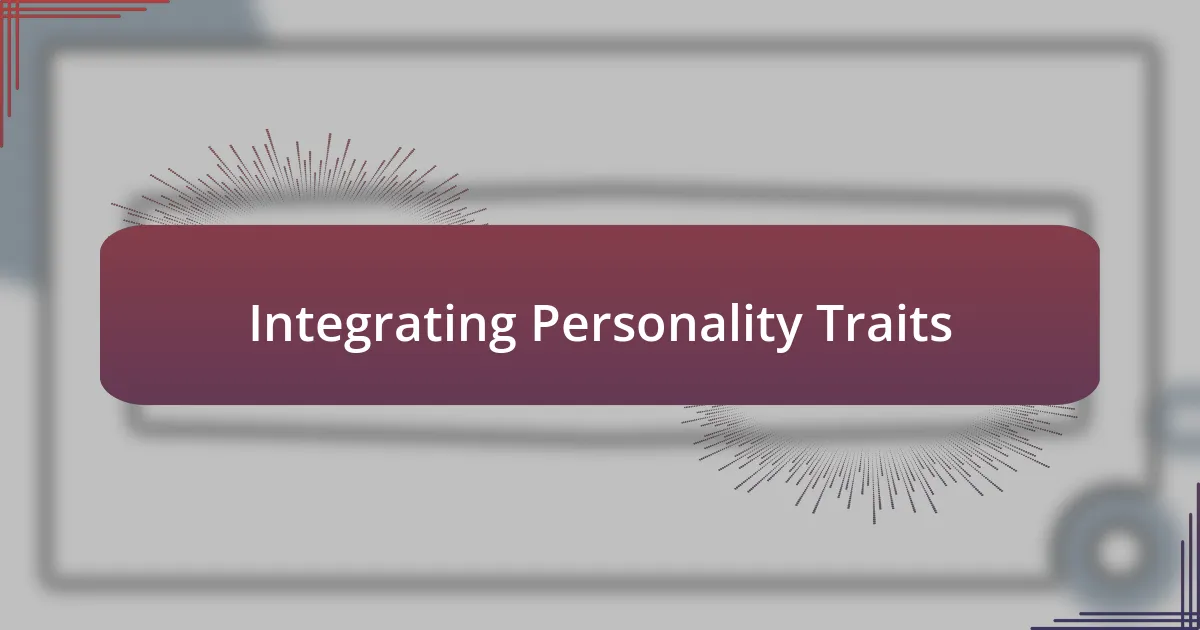
Integrating Personality Traits
Integrating personality traits into a character not only enhances their depth but also creates a lasting impact on the audience. I’ve often found that blending traits like introversion and curiosity can give birth to a more complex character. For instance, when I created a detective who was socially awkward yet deeply inquisitive, it added layers to his interactions and revealed how he navigated the world—often stumbling but always seeking the truth. Isn’t it interesting how such contradictions can make a character feel more human?
To bring these traits to life, I frequently use dialogue to showcase a character’s personality. I remember crafting conversations for a vibrant artist who expressed her insecurities through humor. The tension in her interactions with more serious characters highlighted her playful nature while also revealing her underlying fears. This interplay not only made the character relatable but also allowed readers to empathize with her struggles. Have you noticed how well-crafted dialogue can breathe life into a character’s personality?
Moreover, I believe that minor traits can have a profound effect when interwoven around a character’s core attributes. For instance, I once designed a villain with a charming smile that masked his manipulative tendencies. This juxtaposition not only fueled the narrative but also kept readers guessing about his true intentions. It’s these little intricacies that can define and differentiate characters, making them unforgettable. How do you decide which traits to emphasize for your characters?
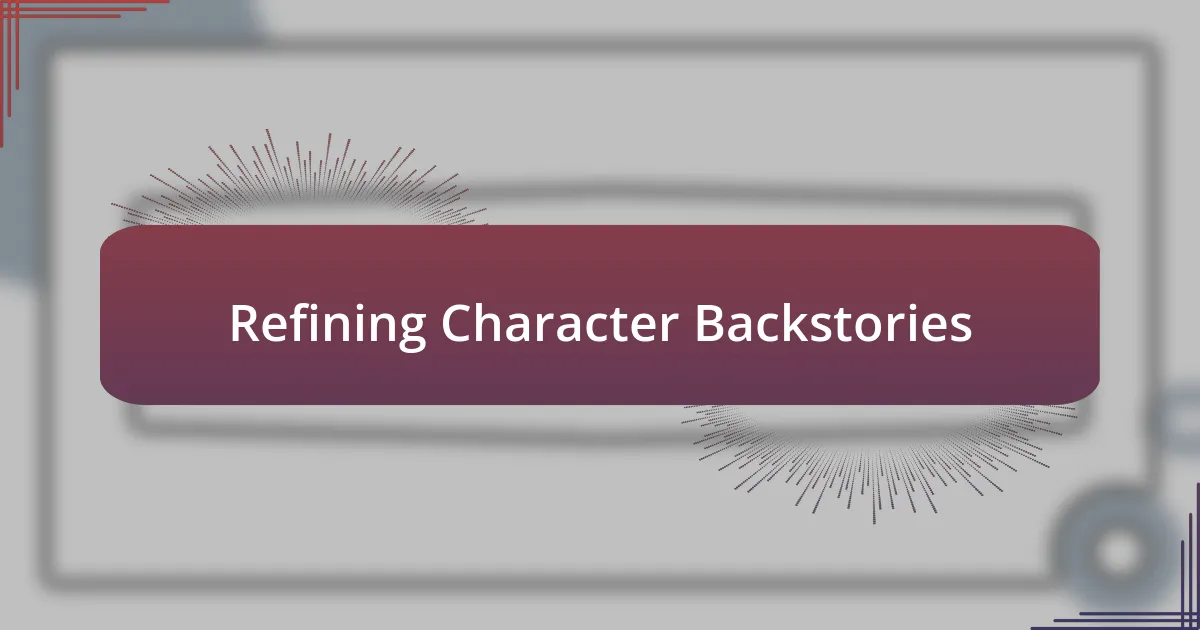
Refining Character Backstories
Refining character backstories is a vital step in creating multi-dimensional figures that resonate with readers. I recall the moment I redefined a character’s history for a fantasy story. Initially, she was simply a warrior fighting for glory, but when I layered in a tragic past involving loss and betrayal, it transformed her motivations and made her journey all the more compelling. Isn’t it fascinating how a single backstory element can completely reshape a character’s drive?
In my experience, I’ve found that the key to a captivating backstory is to connect it to the character’s present circumstances. When I developed a young mage, I decided that her fear of fire stemmed from a childhood accident that claimed her family’s home. This connection made her struggle with fire magic more poignant and relatable. Have you ever considered how backstory arcs can amplify a character’s current conflicts?
I also like to sprinkle in moments from a character’s past that reflect their future choices. For example, I once created a character who, as a child, shared a stolen apple with a stranger. This act kindness came back to haunt her as an adult when she faced a morally gray situation that forced her to choose between helping a friend or adhering to the law. It’s these moments that not only enrich the character’s complexity but also invite readers to ponder the ripple effect of our choices. How do you weave these vital threads of backstory into your character’s life?
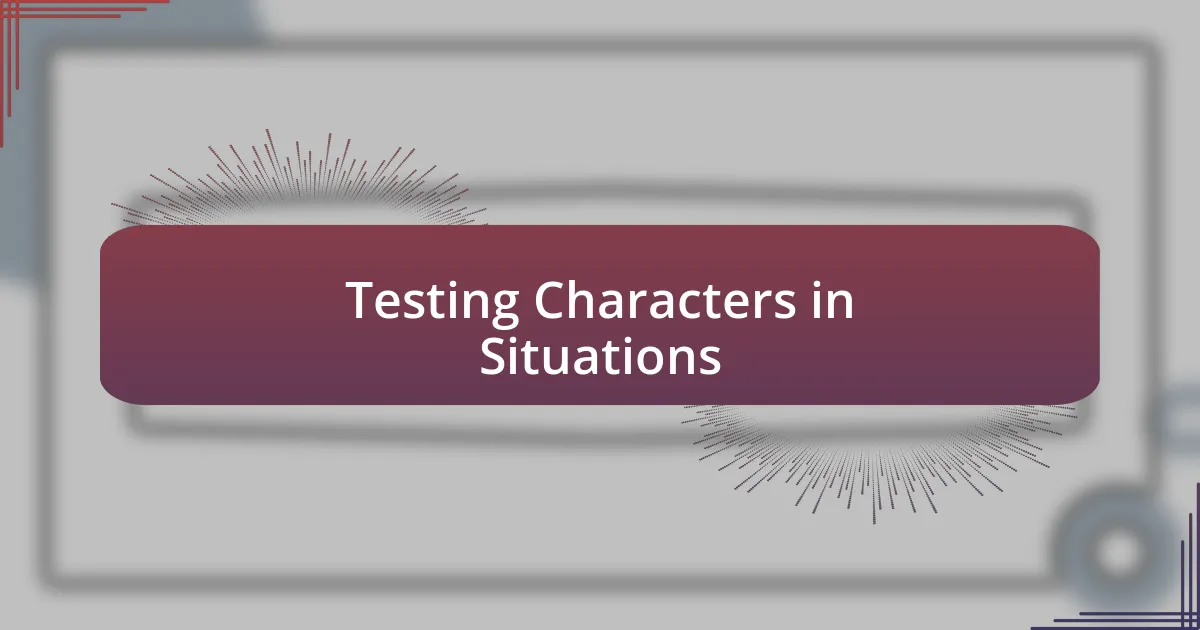
Testing Characters in Situations
Testing characters in various situations is crucial for understanding their reactions and growth. In one of my projects, I placed a brash hero in a situation where he had to negotiate peace rather than fight. Watching him struggle with this unexpected challenge revealed layers of vulnerability I hadn’t identified before. Isn’t it intriguing to see how a character evolves when faced with the opposite of their usual approach?
I often simulate different scenarios to gauge how my characters respond under pressure. For instance, I developed a character who prides herself on her independence. By testing her in a situation where she has to rely on a group to survive a crisis, I noticed how her guarded nature conflicted with her desire to connect. This tension made her journey richer and more authentic. Have you noticed how such trials can unveil hidden strengths or weaknesses in your own creations?
Additionally, I find that placing characters in morally ambiguous situations sheds light on their true nature. One time, I created a character who had always been a rule follower. When confronted with a choice that could save a life but also break the law, the decision she made surprised even me. This exploration not only deepened her character but also forced me—and hopefully the readers—to reflect on what we would do in similar circumstances. How do you think your characters would act in testing moments?

